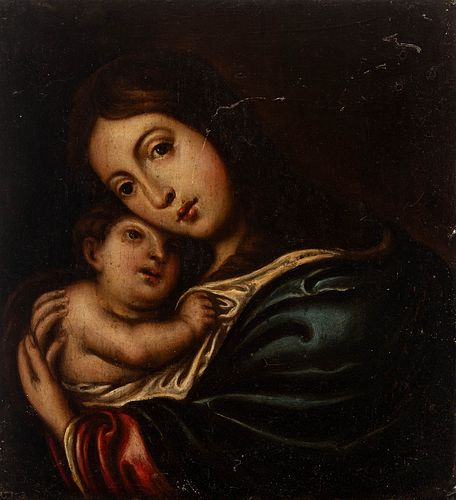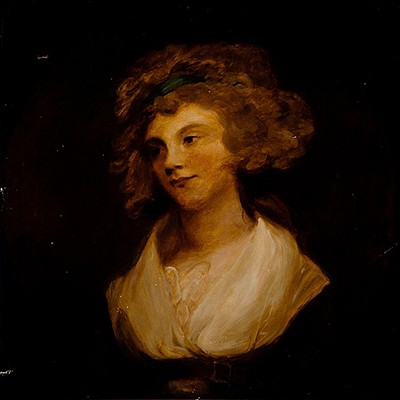Granada School; second half of the seventeenth century. "Virgin and Child". Oil on canvas.
About Seller
Carrer Aragó 346
Barcelona
Spain
Setdart Subastas was born in 2004 and is currently the first online art auction in Spain with solidity, prestige and reliability guaranteed by our more than 60,000 users. Setdart has a young, dynamic and enterprising team ready to successfully manage the purchase and sale of art works through custom...Read more
Two ways to bid:
- Leave a max absentee bid and the platform will bid on your behalf up to your maximum bid during the live auction.
- Bid live during the auction and your bids will be submitted real-time to the auctioneer.
Bid Increments
| Price | Bid Increment |
|---|---|
| EUR€0 | EUR€10 |
| EUR€200 | EUR€25 |
| EUR€500 | EUR€50 |
| EUR€1,000 | EUR€100 |
| EUR€3,000 | EUR€200 |
| EUR€5,000 | EUR€500 |
| EUR€10,000 | EUR€1,000 |
| EUR€20,000 | EUR€2,000 |
| EUR€50,000 | EUR€5,000 |
About Auction
Nov 25, 2021
Setdart Auction House sofia@setdart.com
- Lot Description
Granada School; second half of the seventeenth century. "Virgin and Child". Oil on canvas. Measurements: 50,5 x 47 cm; 77 x 72,5 cm (frame). In this work the Virgin and Child are presented following the usual forms within the devotional painting of the Spanish Baroque: Mary appears half-length, with the Child taken, in the foreground and on a neutral, dark and flat background, on which the figures stand out directly illuminated. It is a typically baroque work, which emphasizes the love between mother and Child through a naturalistic and tender representation, with the two characters joining heads and embracing. During the 17th and 18th centuries, ambitious pictorial series and extensive iconographic programs were created for churches and convents, as well as printed prints, medals and reliquaries for private devotion. As a whole, regardless of their size or support, these images fulfilled the objective of sacralizing daily life beyond the altars. Regarding the Granada school, when Alonso Cano returned to Granada in 1652, he attracted all the artists to him. It could almost be said that the features that characterize the school are the features of his style. Thus, in all of them, the search for the ideal and elegant in the types, the escape from realism and the genre scene, paying little attention to portraiture and almost no attention to still life. They also abound in all the rich intonations of color, with specific palette preferences, such as the use of asphalt, and also the taste for Flemish painting, which would have been promoted by Pedro de Moya, who is said to have traveled to Flanders and England. Because of its style, we can relate this image to the hand of Pedro Atanasio de Bocanegra, a painter from Granada, a disciple of Alonso Cano, Pedro Moya and Juan de Sevilla, the most active artist in Granada in the 1660s. His first known work is the decoration of the Corpus Christi festivities in his hometown in 1661. During the following years we find commissions such as the series of canvases that he executed between 1665 and 1666 for the cloister of the convent of Nuestra Señora de Gracia, now lost; or the numerous paintings, among them the "Conversion of St. Paul", which he painted between 1668 and 1672 for the altar of the school of the Society of Jesus, now the church of Saints Justo and Pastor (in situ). At the same time he was commissioned to decorate the Carthusian monastery of Granada with large scenes of the life of the Virgin. He was also appointed painter of the cathedral. After this period he went to Seville in 1686, and from there he left for the court of Madrid, where he was protected by Don Pedro de Toledo, Marquis of Mancera. Thanks to the influence of his protector, Bocanegra achieved the title of painter of the king "ad honorem" for his painting "Allegory of Justice", inspired by a Venetian print of the mid-sixteenth century, and currently preserved in the Royal Academy of San Fernando. After his stay in Madrid, Pedro Bocanegra returned to Granada. In addition to the aforementioned art galleries and religious centers, we can currently find works by this master in the Museum of Zaragoza, the Museum of Goya in Castres, the Diocesan Museum of Sacred Art in Vitoria and the Museum of Fine Arts in Granada, as well as in various private collections.
Dimensions:
INV Number:
50,5 x 47 cm; 77 x 72,5 cm (frame).
35272489 - Shipping Info
-
In-house shipping available. Please inquire at admin@setdart.com.
-
- Buyer's Premium



 EUR
EUR CAD
CAD AUD
AUD GBP
GBP MXN
MXN HKD
HKD CNY
CNY MYR
MYR SEK
SEK SGD
SGD CHF
CHF THB
THB
















